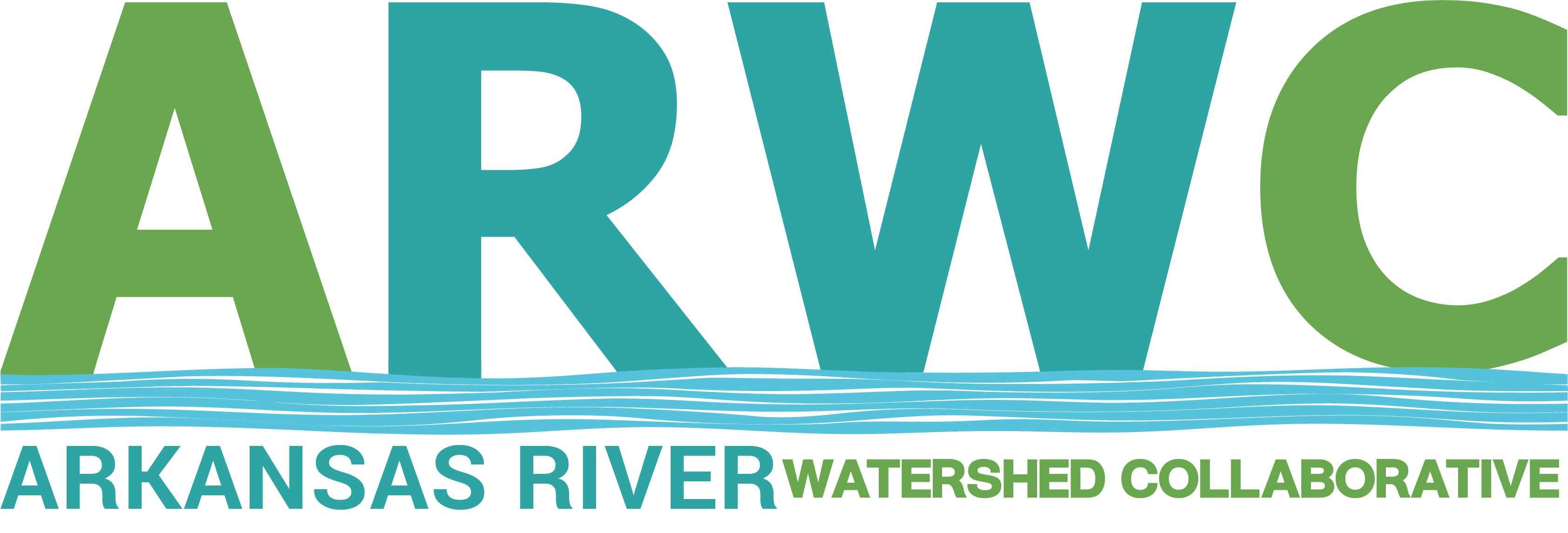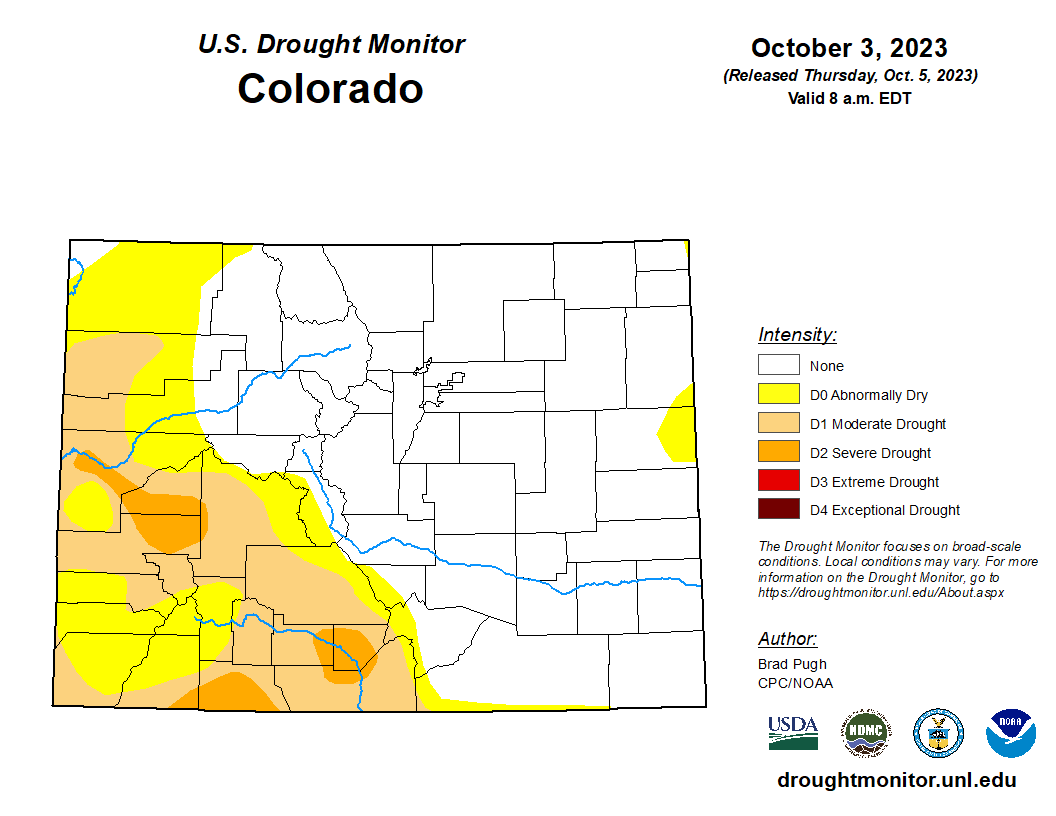The CoCoRaHS (Community Collaborative Rain, Hail and Snow) Network reports the following precipitation amounts, in inches, for the month of September in the Arkansas River Basin in Colorado:
- Leadville – 1.06
- Buena Vista – 1.39-1.65
- Salida – 1.11
- Westcliffe – 1.98-2.38
- Cañon City – 1.04-1.75
- Walsenburg – 2.11
- Trinidad – 1.30-1.80
- Pueblo – 1.41-1.98
- Colorado Springs – 1.51-2.33
- Rocky Ford – 1.42
- Pritchett – 1.37
- Lamar – 0.57
Reservoir Storage
The Bureau of Reclamation reports that Pueblo Reservoir water levels dropped from 222,043 acre-feet at the end of August to 216,512 acre-feet (67% full) at the end of September. Reservoir data for Turquoise Lake and Twin Lakes Reservoir is not currently available. The water level in John Martin Reservoir has dropped from 29,377 acre-feet at the end of august to a current level of 21,997 acre-feet.
River Flows
The Arkansas River flow near Leadville changed very little during the month of September, showing a slight decrease from 21.9 cfs to 20.2 cfs. Downstream, the gauge below Granite reads 144 cfs, and the Wellsville gauge near Salida currently reports 292 cfs.
The flow at Cañon City is currently 250 cfs. Over the past week, releases from Pueblo Reservoir have increased flows below the dam from 53 to 188 cfs. The gauge near Avondale reports a flow of 395 cfs, and the gauge at Rocky Ford reads 191 cfs. The current reading below John Martin Reservoir is 191 cfs, and the flow at Lamar has dropped to 16.3 cfs.
Calling Water Rights
Under interim Division 2 (Arkansas Basin) water administration policies, water-rights holders whose priority could be affected by proposed changes are listed as “authorized diversions” instead of “calls.” Under this interim water-rights administration policy, the Arkansas Basin currently has 16 calling water rights and eight authorized diversions.
Hardscrabble Ditch, with its 1860 Hardscrabble Creek water right, remains the senior calling in the Basin, followed by the 1864 Model Ditch right on the Purgatoire River and the 1865 Cañon Heights Ditch right on Fourmile Creek.
1866 water rights calling for water are the Dan Mahan Ditch on the Huerfano River, the Walsenburg Ditch on the Cucharas River, and the Gonzales Ditch on the Apishapa River.
Additional calling water rights are:
- Hayden Supply Ditch (1868, Greenhorn Creek).
- Stout Ditch No. 1 (1873, Stout Creek)
- Trout Creek Ditch (1874, Cottonwood Creek)
- Dotson Ditch No. 1 (1881, Saint Charles River)
- Cameron Ditch (1882, North Fork, South Arkansas River)
- Tenassee Ditch (1882, South Arkansas River)
- Fort Lyon Canal (1884, Arkansas River)
- Fort Bent Canal (1886, Arkansas River)
- Buffalo Canal, (1886, Arkansas River)
- X-Y Irrigating Ditch (1889, Arkansas River)
- Arkansas River Compact (with Kansas, 1949, Arkansas River)
The eight authorized diversions now in priority are:
- Musgrove Ditch (1903, Big Union Creek)
- Bison Park Reservoir (1911, East Fork West Beaver Creek)
- New Salida Ditch (1912, Arkansas River)
- Helena Ditch (1912, Arkansas River)
- Rock Creek Ditch (1912, Rock Creek)
- Colorado Gulch Ditch (1912, Colorado Gulch Creek)
- Joseph Dunn Ditch (1912, Lake Fork)
- Lake Creek Ditch (1912, Lake Fork)

